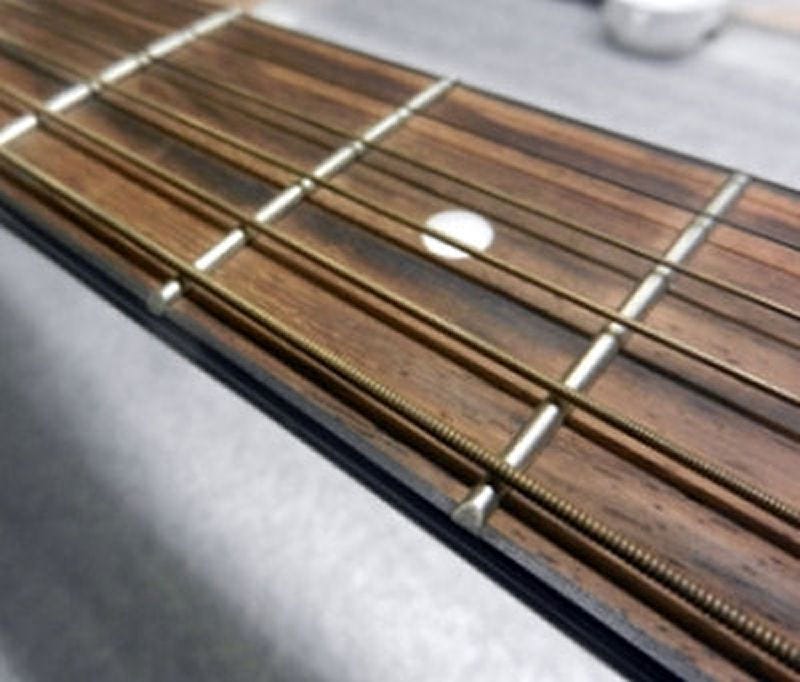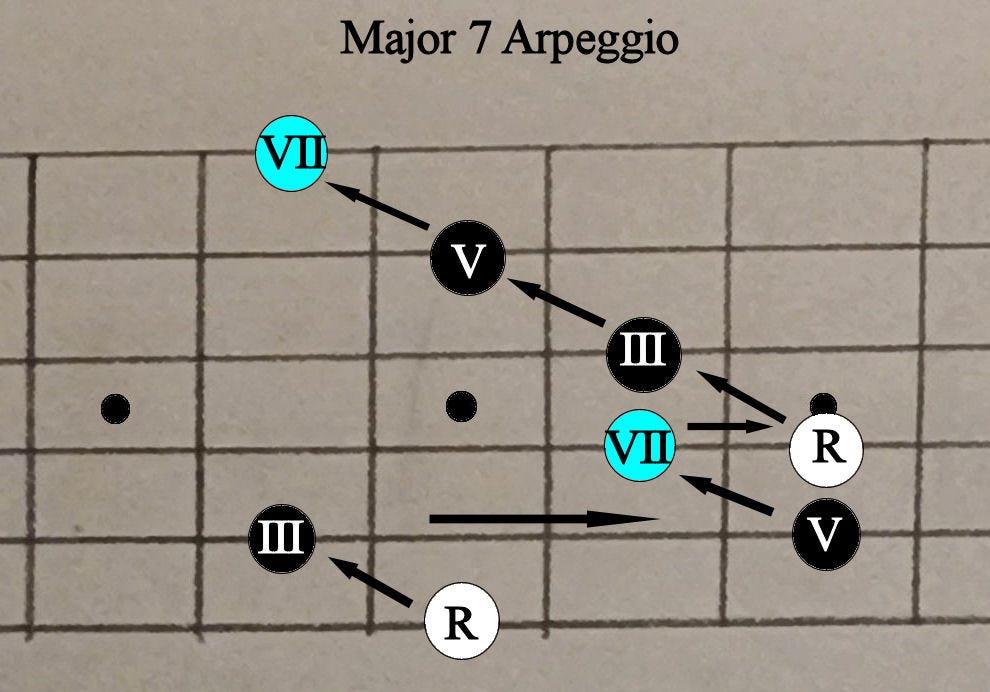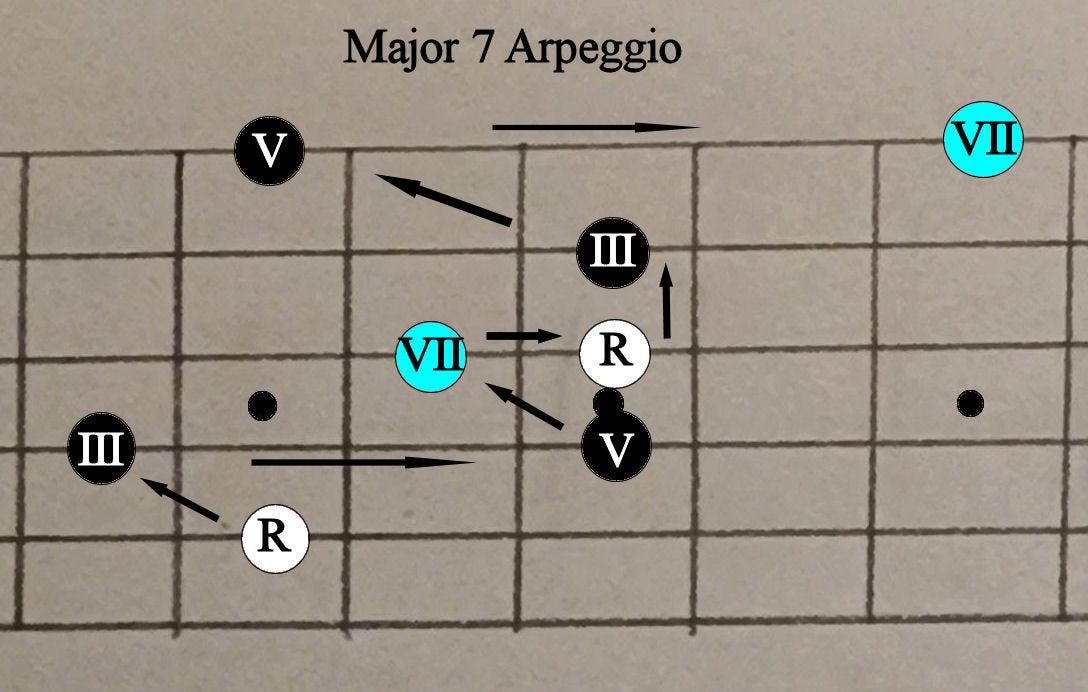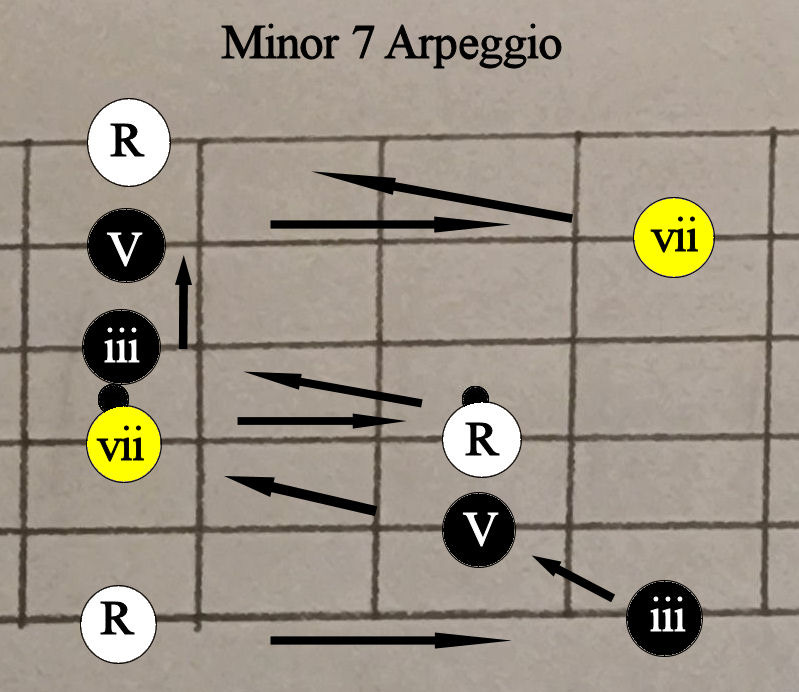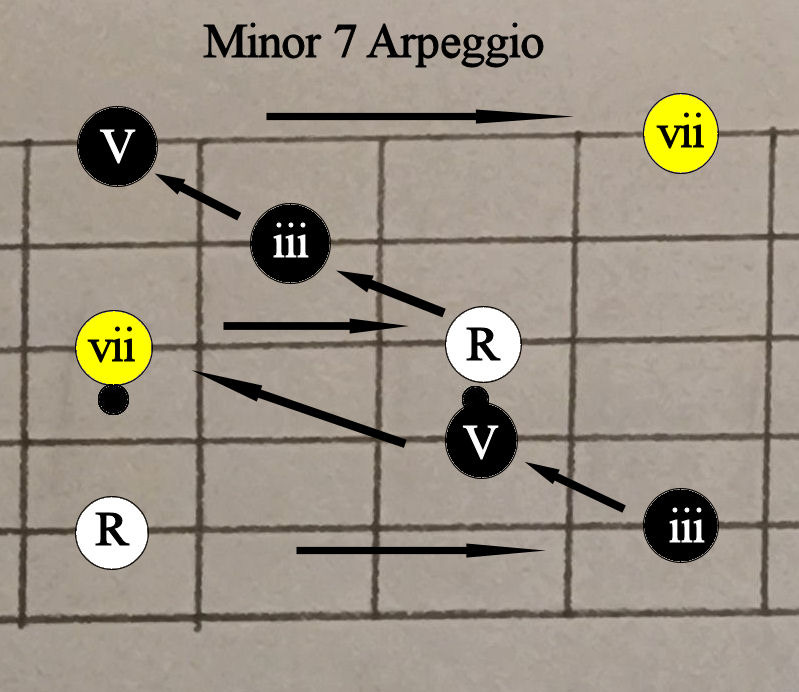Arpeggios! What are they?
How they can help your improvisation (Part Three) [Intermediate Lesson]
Thank-you for subscribing to my newsletter. SubStack SoundHole Music is a free newsletter. My work in writing these helpful and informative guitar lessons, along with many other interesting articles on music, is completely supported by my paying subscribers. You can help support my Substack SoundHole Music Newsletter by investing as a paid subscriber. $8/month or $72/year gives you exclusive material on guitar lessons, not available to free subscribers. I appreciate your consideration and your loyalty - Thank-you, Dave.
Over the years, I have been asked by many of my students about what techniques they can use to improve their improvisation and melodic playing. (This of course, assuming that you are at least somewhat familiar with both diatonic and pentatonic scales). Many of my students feel that they run into a roadblock by playing the same things over and over again. My answer is learning how to practice and incorporate arpeggio's in your improvisation.
This lesson is Part Three of three of the series. You can read Part One here.
Intermediate Lesson
Let’s try Major and minor 7th’s! These work perfect for Jazz.
Practice the following exercises to help you begin thinking and playing outside of the comfort zone of the linear scales.
This first diagram shows the "Major 7" arpeggio. This means that you will only play the notes in a Major 7 chord: (I - III - V - VII).
Will we begin on the 6th string. Think of it as a movable "shape" that you can use in any key, with the root note on the 6th string. Directly below this diagram is the “A Major 7” tablature for the exercise.
Major 7 arpeggio.
This next diagram shows the "Major 7" arpeggio from the 5th string root. This example begins on the 5th string. Again, think of it as a movable "shape" that you can use in any key, with the root note on the 5th string. Directly below this diagram is the “D Major 7” tablature for the exercise.
This next diagram shows the "Minor 7" arpeggio from the 6th string root. This means that you will only play the notes in a minor 7 chord: (I - iii - V - vii). This example begins on the 6th string. Directly below this diagram is the “A minor 7” tablature for the exercise.
This last diagram shows the 5th string root "minor 7" arpeggio. This example begins on the 5th string. Directly below this diagram is the “D minor 7” tablature for the exercise.
Practice these four exercises every time you pick up your guitar. You can even use these arpeggio shapes as warm-ups. Comment below if you have any questions. Please share and consider investing in a monthly or yearly paid subscription. - Thank-you, Dave.





